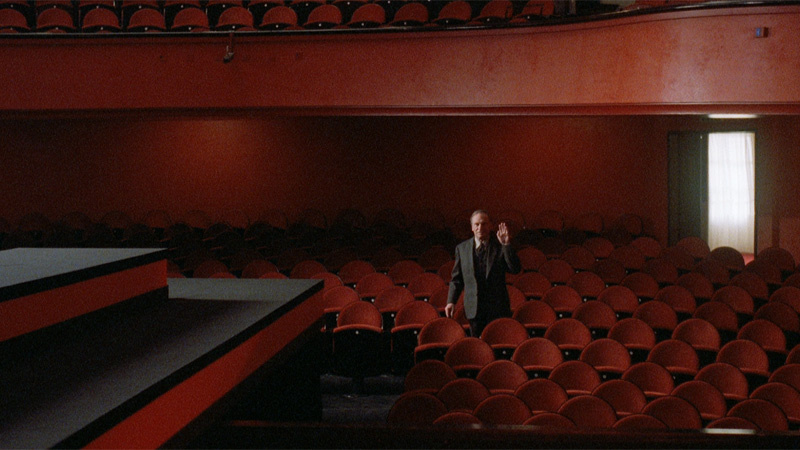Three Colors: Red is a masterful film and the final film by Krzysztof Kieslowski. It’s an astounding piece of filmmaking in its craft and performances, in which two characters in a sea of noise come together and find one another through chance, or perhaps destiny. Kieslowski has taken the idea of fraternity, the final color of the flag, and turned it into a movie of emotion, care, and connection.
Valentine (Irene Jacob) is a model in Geneva and accidentally runs over a dog while driving. She returns the dog to its owner, an older judge named Richter Joseph Kern (Jean-Louis Trintignant), who happens to be spying on neighbors’ phone conversations. This chance encounter becomes the core of the film. Another story plays out on the periphery, that of Auguste (Jean-Pierre Lorit) a recent graduate who is on his way to becoming a judge. He lives around the corner from Valentine, and their paths nearly cross on numerous occasions. The film cleverly does this in single shots, Valentine or Auguste walking by while the other is focused on something else, the camera fluidly moving us from one narrative to another. It’s a sign of connection being just out of reach, but perhaps not quite ready to happen.
Valentine’s own connections are in flux. She earns the ire of her controlling boyfriend Michel when she does not answer the phone right away while she waits for him to return. Her mother and brother need her help to keep the family stable, but she does not know how she could possibly help them. Her life is one in need of change, and a looming trip to England could provide just that.

Red is everywhere in the opening minutes. It’s in the phone lines, it’s on the walls and the knick-knacks and the cars and the storefronts. It’s even in Valentine’s clothes. Red is everywhere, and Kieslowski uses it to create a beautiful canvas of striking color. It is most prominently in the photo of a melancholy Valentine standing against the side of a building, red surrounding her, an image that is brilliantly recalled at the end of the film.
There is an electricity to the filmmaking, a quick and dashing nature like the film itself is constantly out of breath. It has a pace that the previous two films do not, even when it slows down and takes its time. It is perhaps set to the pace of its heroine, whose life is always moving: in a fashion show, in a photo shoot, at a ballet class, at a listening station in a music store, at the judge’s home. Valentine leads a life of movement, never quite staying still until her conversations with Kern calls for it.
Irene Jacob plays the role with a caring innocence; Valentine wants to do the right thing. Her convictions are at odds with Kern’s habits during a wonderful scene where Kern tells her of a particular neighbor he spies on. He points out the house and says that if she feels so badly about his spying that she should inform them. She marches over there, but when the door opens, she is exposed to a picture of devotion and love, one that she is afraid to rock in any way. Jacob is a warm presence here, a joy to watch in the naive but determined way she plays Valentine. Upon her return, Kern tells her of another neighbor, one whose frequency he cannot listen in on. Valentine’s reaction to the neighbor’s potential job is inspired, showing that while innocent, she holds injustice in her heart.

The interactions between Kern and Valentine are the highlights of the film. Diametrically different people, they view life through their own prisms and come to clash over and debate their worldviews. Each thinks they are right when perhaps both are right and wrong in their own way. There is no animosity to their disagreement, but rather curiosity and frank openness. The openness only goes so far, however, as Kern refuses to reveal the story of the woman he once loved, which becomes a sore spot for Valentine and strains their friendship. Jean-Louis Tringtignant is so matter-of-fact and calm in his performance that some might find it too subtle. But there is a heart and sadness to his loneliness that Valentine is able to unlock during their talks.
Three Colors: Red is a film of fraternity, as the flag implies, but it is also about so much more. Human connection often happens by fleeting chance. That the film so magnificently uses this as its baseline is a grand finale to not only the trilogy but to Kieslowski’s work as a whole. Valentine and Kern’s lives have their intricacies, and when they come together, show that despite their differences, a connection is all it takes to change someone’s life.
